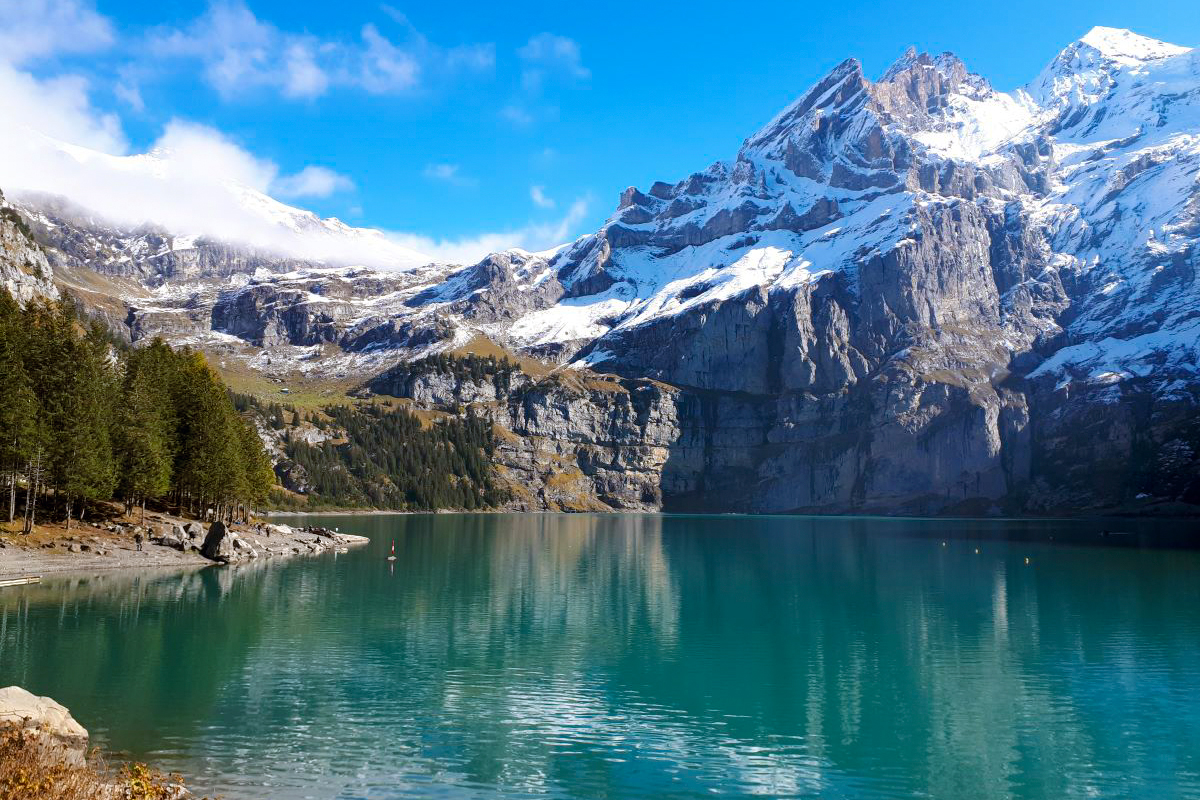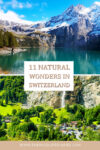Before you plan your Switzerland itinerary, check out this guide to the most beautiful natural wonders in Switzerland that you can explore by hiking in the Swiss Alps.
Lying in the heart of Europe, Switzerland is famous for its strikingly beautiful alpine landscapes. Imagine impressive rugged peaks towering over beautiful valleys, plunging waterfalls and dreamy turquoise-coloured lakes interspersed with cute-as-a-button alpine villages.
The best way to explore these natural gems is by hitting the walking trails in the Swiss Alps. Depending on your walking appetite you can dedicate a few hours to a hike, or take shorter walks to lookouts and take advantage of gondola rides when you don’t feel like walking.
This guide introduces 11 of our favourite Switzerland’s natural wonders that you can explore hiking in the Swiss Alps. And the best thing is that you don’t even need a car. Instead, you’ll take some spectacular train and bus rides.
How to visit the Swiss Alps
Switzerland has an excellent public transport network, in fact, it is one of the most punctual in the world. Buses go to even the most remote valleys and every major lake has a system of ferries.
The best way to travel quickly and stress-free through the country is the Swiss Travel Pass. With this ticket, you can ride between 3-15 days for free on all public transport and get a 50% discount on mountain cable cars. Alternatively, you can book your train tickets via an app like Omio.
Matterhorn / Zermatt
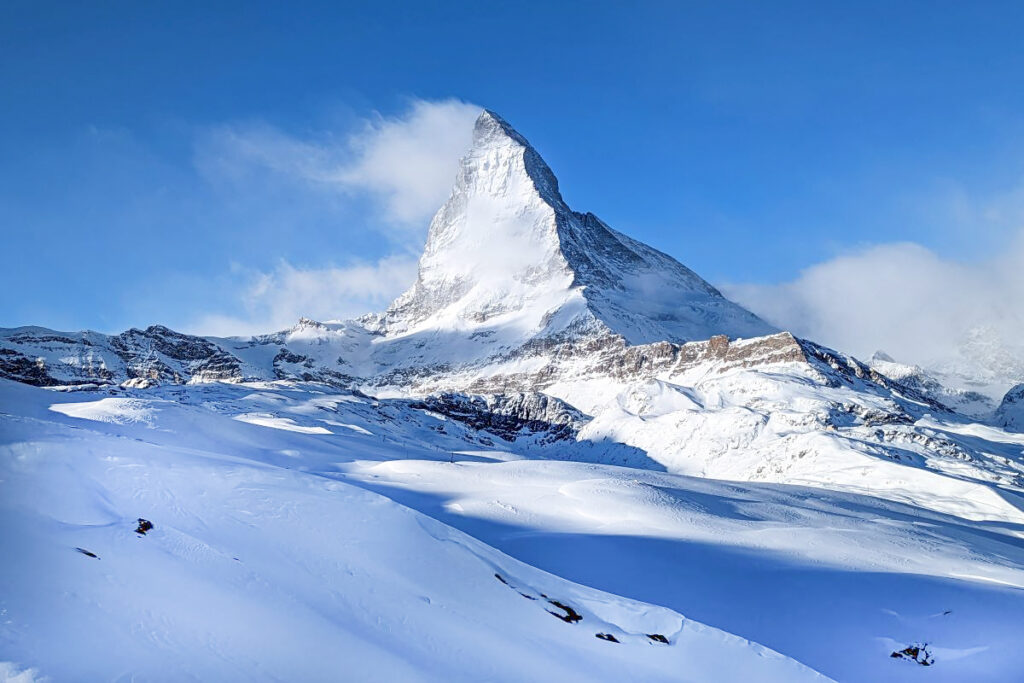
Probably the most famous Swiss natural beauty is the striking Matterhorn. At 4,478 meters, it is not the highest peak in Switzerland but due to its shape the most striking and also the most photographed one.
There are many viewpoints to admire the Matterhorn from. Plus you can unleash yourself on 400 kilometres of wonderful hiking trails around Zermatt which offer fantastic and different views of the mountain.
The Gornergrat, for example, is located at 3,100 meters and is accessible by rack railroad. From there you can admire an incredible twenty-nine 4,000-meter peaks and hike the easy but panoramic trail to Riffelalp.
For yet another incredible perspective, head to the Klein Matterhorn platform, perched at 3,883 meters and boasting the highest mountain railway station in Europe.
As of July 2023, you can even hop on the new gondolas of the Matterhorn Alpine Crossing. They’ll take you over the impressive Theodul Glacier, all the way to the Italian Aosta Valley, where you can enjoy a much cheaper cappuccino.
Zermatt is easily accessible by train from many major cities in Switzerland. From the capital Bern, you need only a little more than 2 hours. Especially recommended is the trip with the Glacier Express, a special train with panoramic windows.
Swiss Grand Canyon / Rheinschlucht
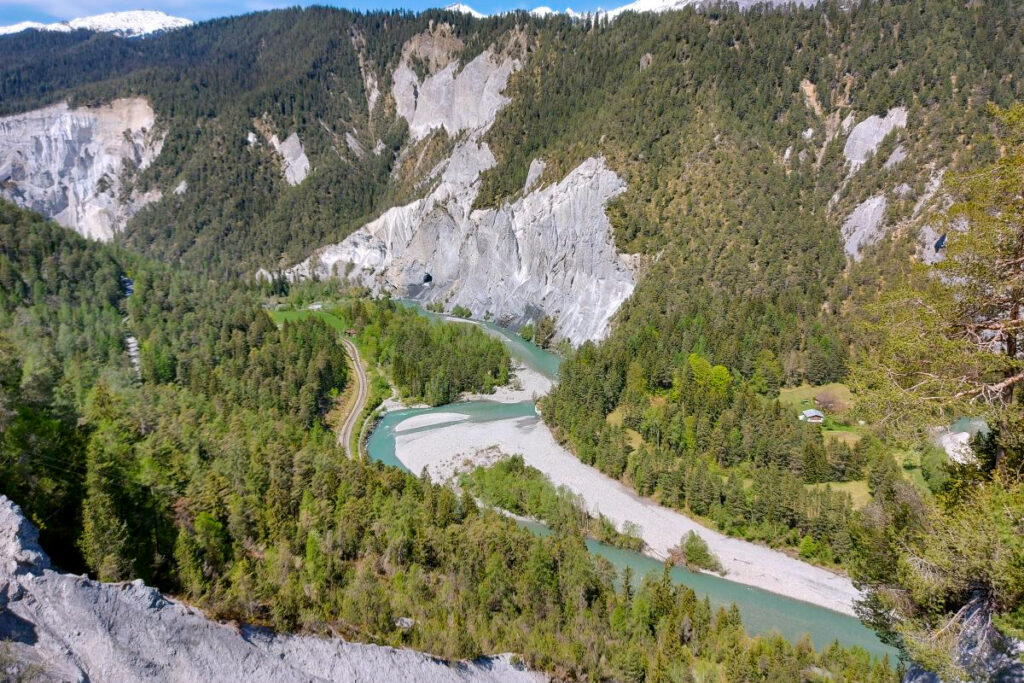
In the heart of the Kanton Graubünden, the Rhine Gorge, also known as the “Swiss Grand Canyon,” is another Switzerland Natural Highlight, you should not miss. Over thousands of years, the powerful Rhine River carved out this geological marvel, stretching over 14 kilometres, with cliffs that tower up to 300 meters.
There are different options to explore the Rhine Gorge including several hiking trails from Trin, Flims or Laax to different viewpoints on the edges of the gorge. Other paths take you inside the canyon, directly along the Rhine.
If you prefer a more adventurous way for your visit, you should do river rafting through the roaring rapids of the Rhine. The 3rd option is a train ride as the railway passes for long stretches within the Rhine Gorge.
From the city of Chur, trains run regularly along the Rhine Gorge, so you have many access points to this natural gem. If you do not have the Swiss Travel Pass, you should buy the special Ruinaulta ticket in order to use all public transport in that area for free.
Lake Bachalp / Bachalpsee
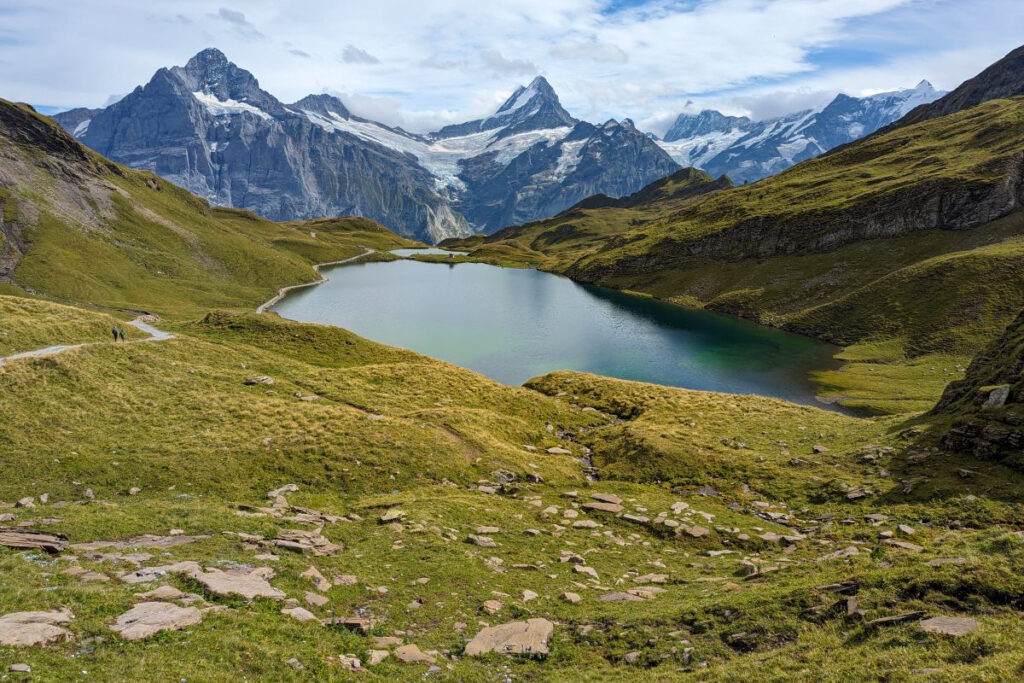
Lying at 2,265 meters above sea level, the beautiful Bachalpsee is a glacial lake with crystal-clear water, in which the surrounding mountain peaks are reflected. When sitting on the lake’s north shore, the breathtaking panorama includes the famous mountains Eiger, Mönch and Jungfrau.
Lake Bachalp can only be reached by foot. This is your perfect opportunity to do some hiking in the Swiss Alps. You can reach the lake by using the easy and wide path coming from First, a mountain station above the famous village of Grindelwald.
More experienced hikers should do the 15th stage of the Via Berna multi-day hike. It starts at Schynige Platte, a mountain plateau with amazing views of Lake Thun and Lake Brienz and runs along a high-altitude trail with great views, passing Bachalpsee and ending at Grindelwald First – one of the most famous hiking trails in Switzerland!
If a multi-day hike is not your type of holiday, you can visit Lake Bachalpsee on an organised tour from Zurich.
Aletsch Glacier
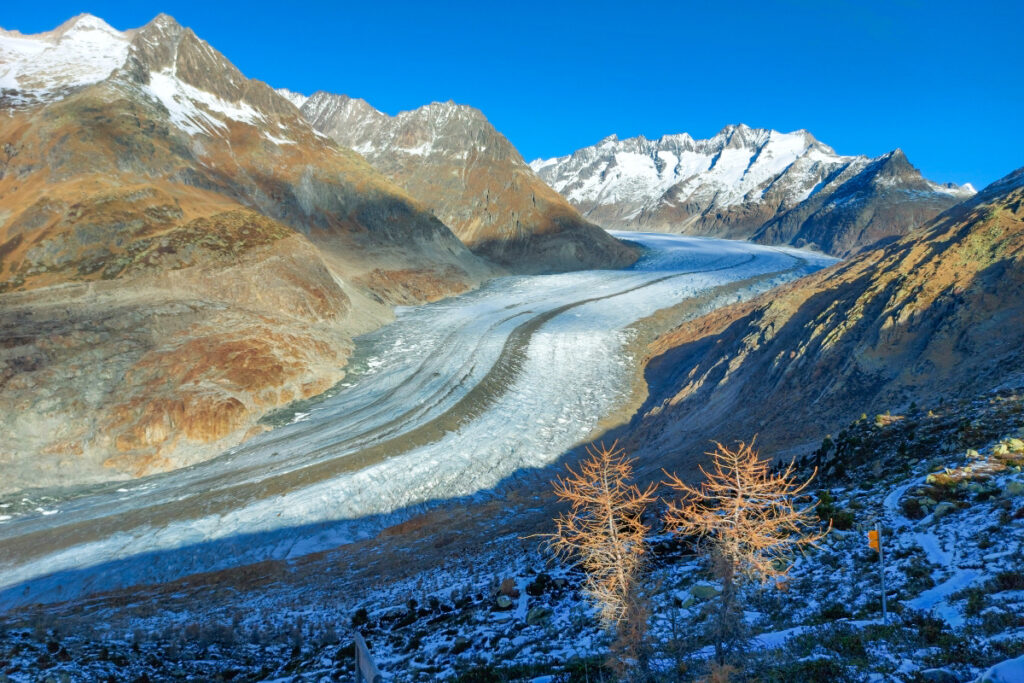
The Aletsch Glacier is the largest glacier in the Alps. In 2001, the icy giant and its surroundings were designated the first Alpine UNESCO World Heritage Site, in a tribute to the natural beauty of the Swiss Alps.
To really experience the size of the Aletsch Glacier you should hike the panoramic trail along its shores. This is a 3-day hiking trail, with several lookouts to view the glacier from different angles. Most people choose to walk just the very scenic middle part of the trail, from Bettmeralp to Fiescheralp.
For the more adventurous, there are guided tours to the surface of the glacier and to its base at Konkordiaplatz.
The Aletsch Glacier can be reached from the Fiesch Valley in the canton of Valais. Various cable cars lead to the car-free mountain villages of Bettmeralp and Fiescheralp. From there, the slowly melting ice giant and the 2nd stretch of the panoramic trail can be reached by an hour’s hike.
If you do not want to hike, you can take another gondola from Fiescheralp to get to the Eggishorn viewpoint at almost 3000 meters, with fantastic views of the Aletsch Glacier.
Rhein Falls
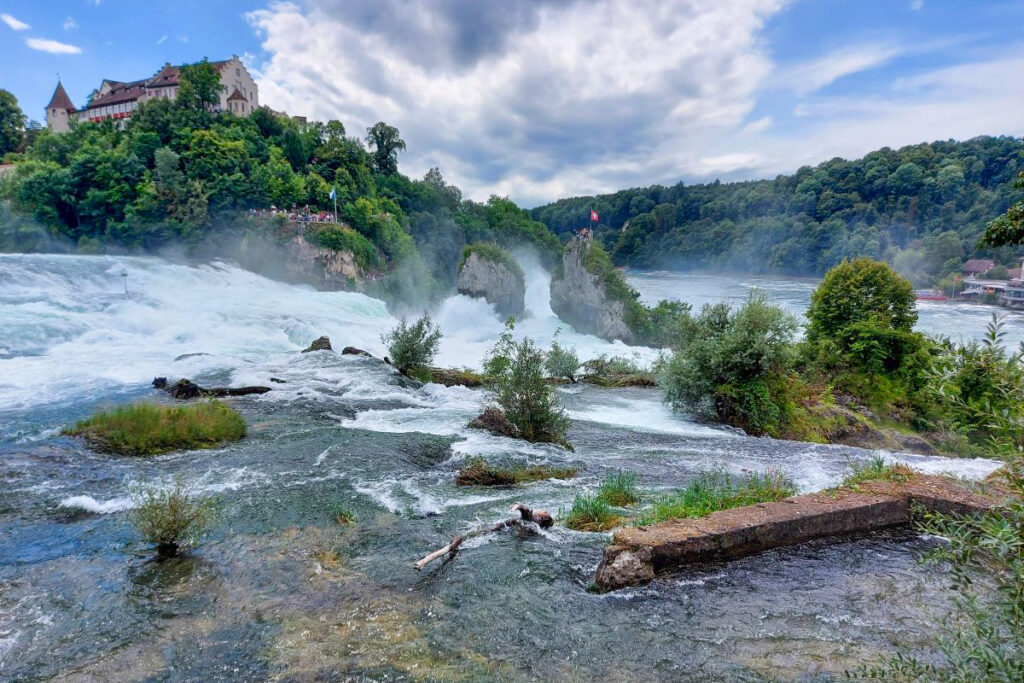
The Rhine Falls is one of the largest waterfalls in Europe. It is not the height of the waterfall (it’s only 23 meters) that makes it so spectacular but its width of 150 meters.
If you are looking for an intense experience, do the boat ride to the cliff at the base of the waterfall but be prepared to get wet. From the viewing platform, in the middle of the Waterfall, you can feel the vibrations of the rushing water under your feet, allowing you to experience the raw power of nature firsthand.
Alternatively, you can do an easy hike around the majestic waterfall. The 6km round trip on well-maintained trails leads through the surrounding forests, passes the castle of Laufen, on top of the Rhine Falls and various viewpoints to admire the waterfall from different angles. For perfect vistas, make sure to hike on the waterfall side of the train bridge, you won’t be able to change as soon as you are on it.
The impressive Rhine Fall is located about 5km south of the northern Swiss town of Schaffhausen and is very easy to reach. There are lots of parking spaces as well and the falls have their own train station.
And if you prefer organised tours, this tour from Zurich combines Rhine Falls with visits to the adorable villages of Stein am Rhein.
Creux de Van
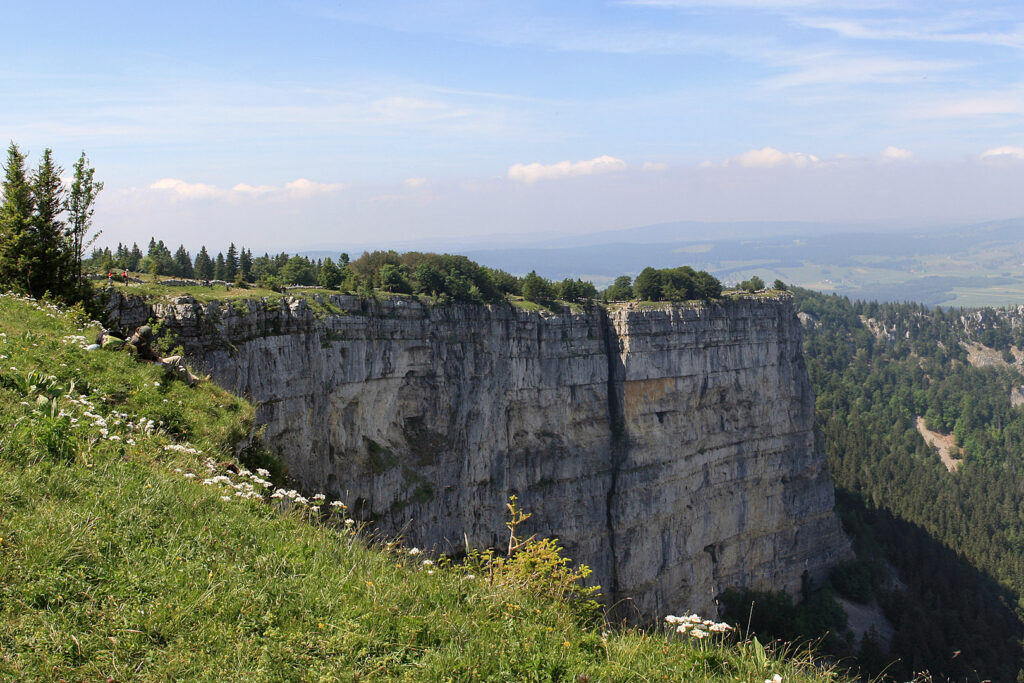
Another geological natural wonder of Switzerland is the Creux du Van, in the Jura Mountains of western Switzerland. Here, 160-meter-high vertical rock walls enclose a four-kilometre-long and over a kilometre-wide valley basin.
The untouched landscape around the Creux du Van is protected by a 25-square-kilometre reserve. On this hike, you can also encounter chamois, ibex, lynx and other wild animals.
The Creux du Van is about an hour west of the state capital Bern. The nearest parking spaces, 300m away, are limited, therefore we recommend taking the train to Noiraigue. From there, a wonderful circular hike connects the Creux du Van and another natural wonder: the impressive Areuse gorge.
Lake Oeschinen / Oeschinensee
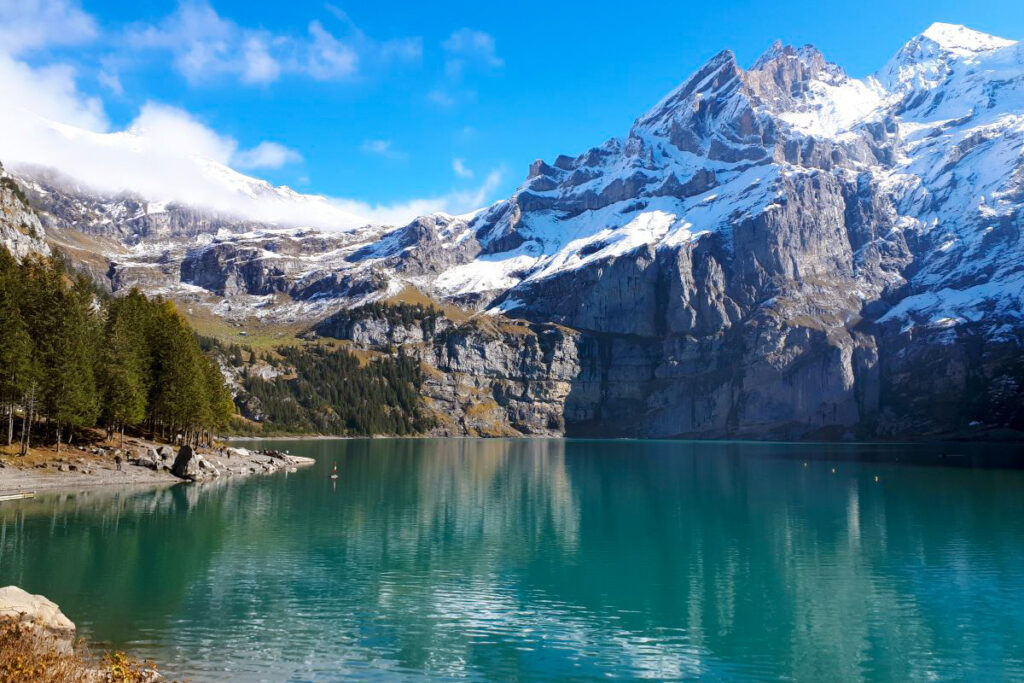
No longer a hidden gem but still absolutely worth a visit is the beautiful Lake Oeschinen. This glacial lake, situated at an elevation of 1,578 meters, has crystal-clear waters that mirror the surrounding peaks.
You can swim or simply sit on the shore and picnic as many families like to do on weekends. Keep in mind that this is a very popular spot and its best to visit mid-week if you can.
You can reach the beautiful lake after about an hour from the train station Kandersteg, in the Bernese Oberland. For the return trip, take the panoramic path above the lake.
And if you are more of a waddler than a hiker, you can take the gondola from Kandersteg and then walk to the lake in 30 minutes along an easy, wide hiking trail.
Lauterbrunnen Valley
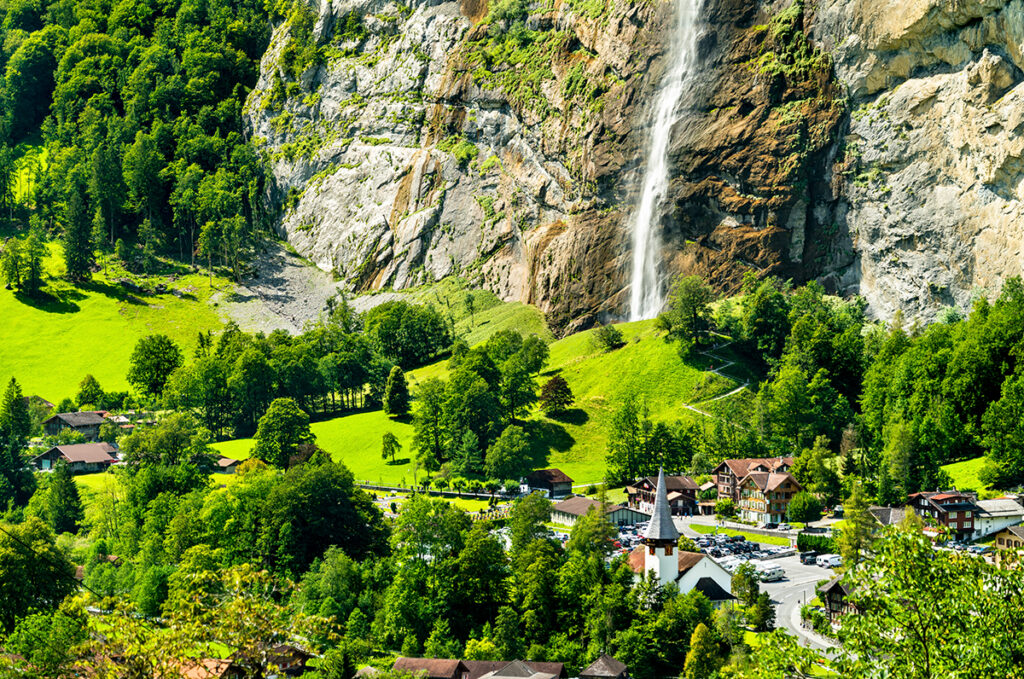
Lauterbrunnen Valley is another very popular area to experience the beauty of the Swiss Alps. Here Switzerland really looks like something out of a picture book with the small villages of Mürren and Wengen perched on high plateaus, offering fabulous views of the beautiful valley below. Within the valley, you have Lauterbrunnen with waterfalls cascading down the steep rock on the left and right, each one more spectacular than the last.
The Staubbach Falls fall freely from an imposing height of 297 meters, making them among the highest waterfalls in Switzerland. The Trümmerbach Falls is an extravaganza of ten glacial waterfalls flowing inside the mountain, accessible only by a tunnel lift.
The best time to visit Lauterbrunnen Valley is in spring, when the melting snow feeds the waterfalls, or in late summer when they are fed by the melting of the glaciers. Not only will the waterfalls be in full flow, but you’ll also avoid the crowds of the peak season.
The picture-perfect Lauterbrunnen Valley is easily accessible by a 1.5-hour train ride from Bern.
Verzasca Valley
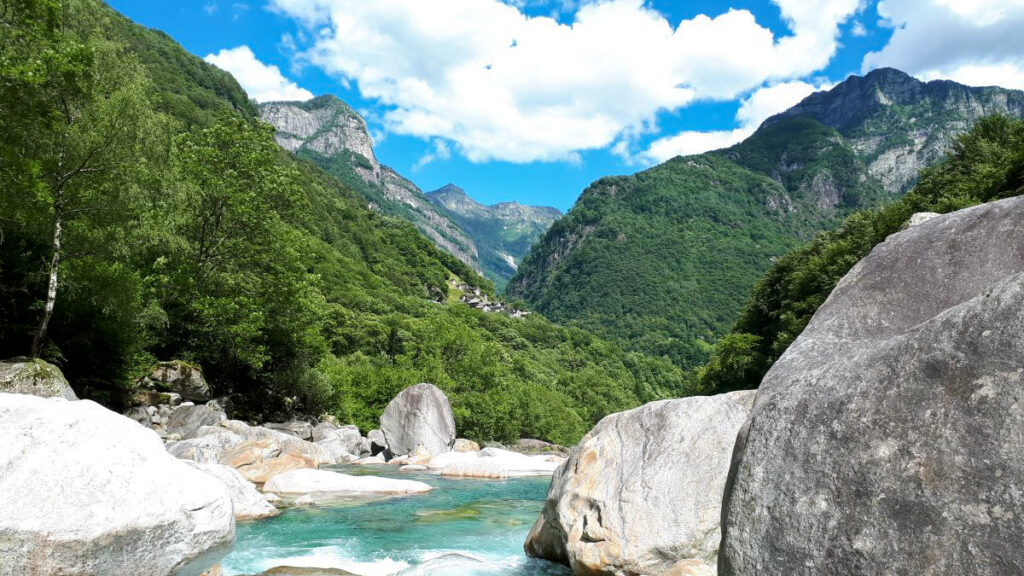
The unspoiled Verzasca Valley is situated in the Ticino Alps in southern Switzerland. It is lesser-known and offers a year-round destination of natural beauty and tranquillity.
The turquoise-blue Verzasca River flows through the green valley, flanked by steep cliffs on both sides. Don’t miss the Ponte dei Salti – an ancient stone bridge spanning the emerald-green river near the village of Lavertezzo.
The natural pools created by the water are perfect for summer relaxation. If you are a keen photographer, you should visit in winter, when a mystical atmosphere shrouds the water.
When visiting the Ponte dei Salti, do not forget to explore the village of Lavertezzo itself, with its stone houses and narrow streets, right next to it. For a beautiful hike in the Swiss Alps, take the beautiful 14-km-long trail along the riverside from Lavertezzo to the village of Sonogno, at the valley’s end.
That magnificent valley is easily accessible from the cities of Locarno and Bellinzona. The local bus service operates multiple times daily, taking you in 1.5 hours to Sonogno, the highest village in this hidden gem of Switzerland’s nature.
Lake Lucerne
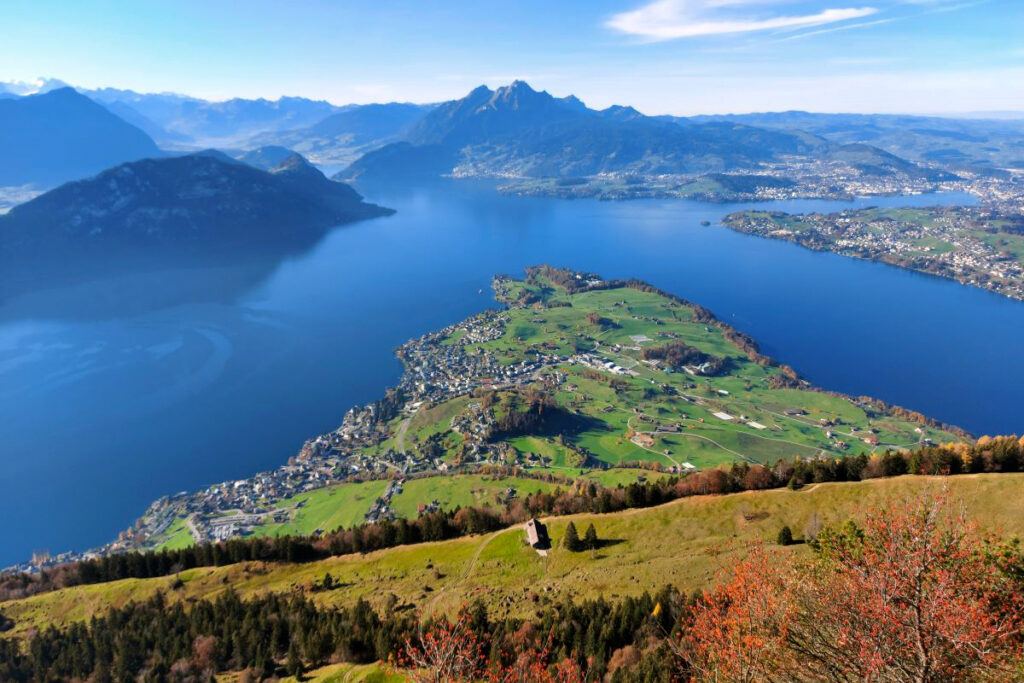
Lake Lucerne, also known as Vierwaldstättersee, is located in the heart of Switzerland. With an area of 114 square kilometres, it is the fourth-largest lake in Switzerland.
The lakeshore stretches for about 150 kilometres and offers numerous opportunities for walking, swimming and relaxing.
A popular way to explore the lake is by boat, which offers great views of the surrounding mountains, including the famous Mount Pilatus and Mount Rigi. Both mountains, of course, offer fantastic views of the famous lake from above and are reachable by foot or cable cars.
The vastness of the lake also makes it an ideal playground for water sports: sailing, windsurfing and swimming are among the popular activities.
The towns around Lake Lucerne, like Lucerne itself, are known for their picturesque charm and are good starting points for lake exploration.
Aare River
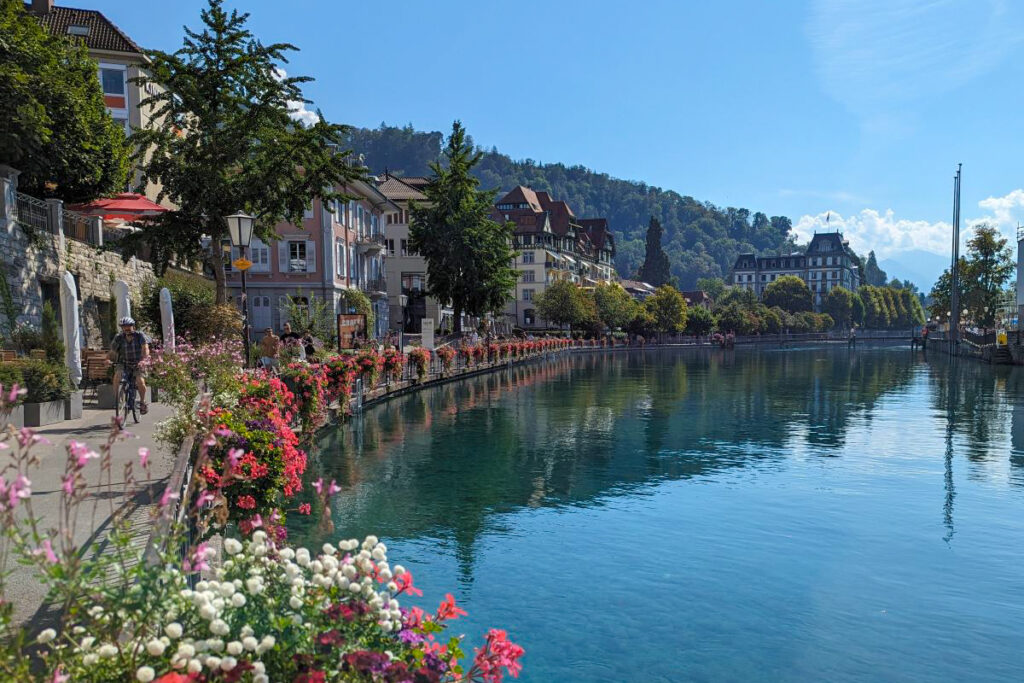
The light blue river Aare starts in the Bernese Alps and winds its way through the heart of Switzerland over a distance of almost 300 kilometres before it flows into the Rhine at the German border.
The Aare Gorge, for example, is located in the Hasli Valley and was formed over thousands of years by the Aare Glacier. The gorge can be safely crossed via tunnels and over footbridges on an easy, one-hour hike.
The clean river is especially popular with the city people in Bern and Thun where the Aare meanders beautifully through the attractive cities. A highlight in both towns is swimming in the Aare.
Final Thoughts on Natural Wonders in Switzerland
As you have seen in this guide, in Switzerland nature is as spectacular as it is accessible. Short, easy hikes in the Swiss Alps take you to spellbinding natural wonders. And if you are a serious hiker, you can spend days immersed in breathtaking nature.
About the Author
Linda is the creating mind and the adventurer behind Hiking the Alps. Follow her blog for all things Alps.

